Grow Veggies at Home – imagine stepping outside your back door and picking a sun-ripened tomato, still warm from the sun, or snipping fresh herbs to add a burst of flavor to your dinner. Sounds idyllic, right? Well, it’s absolutely achievable, even if you don’t have acres of land! For centuries, people have cultivated small gardens, from the intricate kitchen gardens of medieval monasteries to the victory gardens of wartime eras. This connection to the earth, and the satisfaction of nurturing life, is deeply ingrained in us.
But let’s be honest, modern life can be hectic. Who has time to become a master gardener? That’s where this DIY guide comes in! I’m going to share some simple, yet effective, tricks and hacks that will help you grow veggies at home, regardless of your experience level or the size of your space. Whether you’re a complete beginner or have a slightly green thumb already, these tips will empower you to create a thriving edible garden.
Why do you need these DIY tricks? Because growing your own food is not only incredibly rewarding, but it’s also a fantastic way to eat healthier, save money, and reduce your environmental impact. Plus, there’s nothing quite like the taste of homegrown produce. So, let’s ditch the overwhelm and dive into some easy-to-follow techniques that will have you harvesting your own delicious veggies in no time!
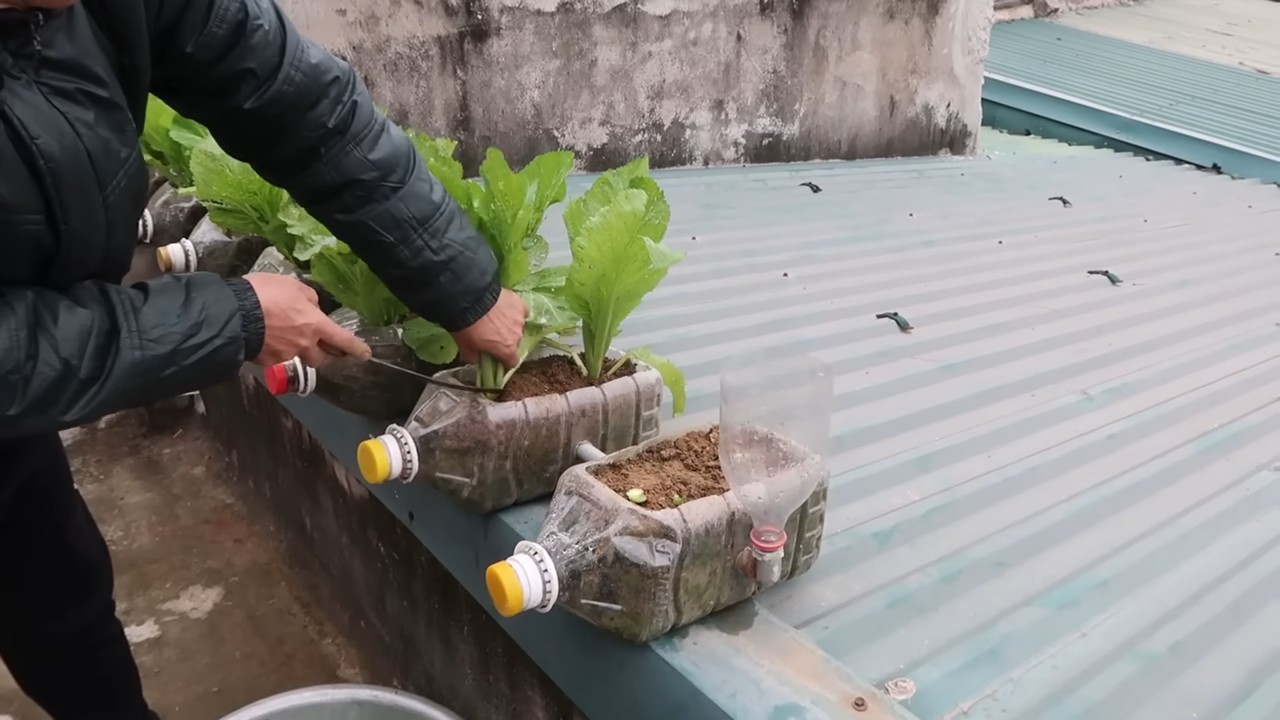
Gemüseanbau zu Hause: Dein umfassender DIY-Leitfaden
Hallo liebe Gartenfreunde! Habt ihr auch Lust, euer eigenes Gemüse anzubauen, wisst aber nicht, wo ihr anfangen sollt? Keine Sorge, ich zeige euch, wie ihr auch ohne riesigen Garten frisches, leckeres Gemüse zu Hause ziehen könnt. Egal ob auf dem Balkon, der Terrasse oder sogar auf der Fensterbank – mit ein paar Tricks und Kniffen klappt das garantiert!
Was du für deinen Gemüsegarten brauchst
Bevor wir loslegen, hier eine Liste der Dinge, die du für deinen kleinen Gemüsegarten benötigst:
* Saatgut oder Jungpflanzen: Wähle Gemüsesorten, die dir schmecken und die für deinen Standort geeignet sind. Anfängerfreundlich sind beispielsweise Salat, Radieschen, Kräuter, Tomaten und Paprika.
* Geeignete Pflanzgefäße: Töpfe, Balkonkästen, Hochbeete oder sogar recycelte Behälter – alles ist möglich, solange es Abzugslöcher für überschüssiges Wasser hat.
* Hochwertige Pflanzerde: Verwende spezielle Gemüseerde, die auf die Bedürfnisse von Gemüsepflanzen abgestimmt ist.
* Dünger: Organischer Dünger wie Kompost oder Hornspäne versorgt deine Pflanzen mit wichtigen Nährstoffen.
* Gießkanne oder Gartenschlauch: Zum regelmäßigen Gießen deiner Pflanzen.
* Gartengeräte: Eine kleine Schaufel, eine Harke und eventuell eine Pflanzkelle erleichtern die Arbeit.
* Standort: Ein sonniger Platz ist ideal für die meisten Gemüsesorten.
Schritt-für-Schritt-Anleitung: So legst du deinen Gemüsegarten an
1. Die Planung: Was soll wachsen?
1. Wähle deine Gemüsesorten: Überlege dir, welches Gemüse du gerne isst und welche Sorten für deinen Standort geeignet sind. Informiere dich über die Licht- und Platzbedürfnisse der einzelnen Pflanzen.
2. Erstelle einen Pflanzplan: Skizziere, wo du welches Gemüse anbauen möchtest. Berücksichtige dabei die Wuchshöhe und den Platzbedarf der Pflanzen. Achte auch auf gute Nachbarschaften: Manche Pflanzen fördern sich gegenseitig, während andere sich behindern.
3. Kaufe Saatgut oder Jungpflanzen: Besorge dir hochwertiges Saatgut oder gesunde Jungpflanzen im Fachhandel oder online. Achte auf Bio-Qualität, um Pestizide zu vermeiden.
2. Die Vorbereitung: Pflanzgefäße und Erde
1. Wähle die richtigen Pflanzgefäße: Die Größe der Pflanzgefäße hängt von den gewählten Gemüsesorten ab. Für Salat und Kräuter reichen kleinere Töpfe, während Tomaten und Paprika größere Behälter benötigen.
2. Sorge für Abzugslöcher: Stelle sicher, dass deine Pflanzgefäße Abzugslöcher haben, damit überschüssiges Wasser ablaufen kann und Staunässe vermieden wird.
3. Fülle die Pflanzgefäße mit Erde: Verwende hochwertige Gemüseerde, die locker und nährstoffreich ist. Fülle die Gefäße bis kurz unter den Rand.
3. Die Aussaat oder das Pflanzen: Los geht’s!
1. Aussaat: Befolge die Anweisungen auf der Saatguttüte. Säe die Samen in der angegebenen Tiefe und bedecke sie leicht mit Erde. Gieße die Erde vorsichtig an.
2. Pflanzen von Jungpflanzen: Grabe ein Loch, das etwas größer ist als der Wurzelballen der Jungpflanze. Setze die Pflanze ein und fülle das Loch mit Erde auf. Drücke die Erde leicht an und gieße die Pflanze gut an.
3. Abstand halten: Achte darauf, dass die Pflanzen genügend Abstand zueinander haben, damit sie sich gut entwickeln können.
4. Die Pflege: Gießen, Düngen, Ernten
1. Regelmäßiges Gießen: Gieße deine Pflanzen regelmäßig, besonders an heißen Tagen. Die Erde sollte immer leicht feucht sein, aber nicht nass sein. Vermeide Staunässe.
2. Richtig Düngen: Dünge deine Pflanzen regelmäßig mit organischem Dünger wie Kompost oder Hornspäne. Befolge die Anweisungen auf der Düngerpackung.
3. Unkraut entfernen: Entferne regelmäßig Unkraut, damit deine Gemüsepflanzen genügend Platz und Nährstoffe haben.
4. Schädlinge bekämpfen: Kontrolliere deine Pflanzen regelmäßig auf Schädlinge. Bei Bedarf kannst du natürliche Schädlingsbekämpfungsmittel einsetzen.
5. Ernten: Ernte dein Gemüse, sobald es reif ist. Regelmäßiges Ernten fördert das Wachstum neuer Früchte.
Spezielle Tipps für bestimmte Gemüsesorten
Tomaten
* Sonniger Standort: Tomaten lieben die Sonne. Stelle sie an einen möglichst sonnigen Platz.
* Stützen: Tomatenpflanzen brauchen eine Stütze, damit sie nicht umknicken. Verwende Tomatenstäbe oder ein Rankgitter.
* Ausgeizen: Entferne regelmäßig die Seitentriebe (Geiztriebe), damit die Pflanze ihre Energie in die Früchte steckt.
* Regenschutz: Schütze deine Tomaten vor Regen, um Pilzkrankheiten vorzubeugen.
Salat
* Halbschatten: Salat verträgt keine pralle Sonne. Stelle ihn an einen halbschattigen Platz.
* Regelmäßiges Gießen: Salat braucht viel Wasser. Gieße ihn regelmäßig, besonders an heißen Tagen.
* Schnecken: Schütze deinen Salat vor Schnecken.
Kräuter
* Sonniger Standort: Die meisten Kräuter lieben die Sonne. Stelle sie an einen möglichst sonnigen Platz.
* Weniger Gießen: Kräuter vertragen Trockenheit besser als Staunässe. Gieße sie nur, wenn die Erde trocken ist.
* Regelmäßiges Ernten: Regelmäßiges Ernten fördert das Wachstum neuer Blätter.
Häufige Fehler und wie du sie vermeidest
* Zu wenig Sonne: Viele Gemüsesorten brauchen viel Sonne, um gut zu wachsen. Achte darauf, dass dein Gemüsegarten genügend Sonne bekommt.
* Zu viel Wasser: Staunässe kann zu Wurzelfäule führen. Achte darauf, dass das Wasser gut ablaufen kann.
* Falsche Erde: Verwende spezielle Gemüseerde, die auf die Bedürfnisse von Gemüsepflanzen abgestimmt ist.
* Zu wenig Dünger: Gemüsepflanzen brauchen viele Nährstoffe, um gut zu wachsen. Dünge sie regelmäßig mit organischem Dünger.
* Schädlinge ignorieren: Kontrolliere deine Pflanzen regelmäßig auf Schädlinge und bekämpfe sie bei Bedarf.
Vertikal Gärtnern: Platzsparendes Gemüseanbauen
Wenn du wenig Platz hast, ist vertikales Gärtnern eine tolle Möglichkeit, trotzdem Gemüse anzubauen. Hier sind ein paar Ideen:
* Hängende Töpfe: Hänge Töpfe mit Kräutern, Erdbeeren oder kleinen Salatsorten an deinen Balkon.
* Paletten-Garten: Verwandle eine alte Palette in einen vertikalen Garten.
* Rankgitter: Nutze Rankgitter für Kletterpflanzen wie Bohnen, Erbsen oder Gurken.
* Vertikale Pflanztaschen: Pflanztaschen sind ideal für Kräuter, Salat und Erdbeeren.
Recycling im Gemüsegarten: Nachhaltig Gärtnern
* Alte Joghurtbecher: Verwende alte Joghurtbecher als Anzuchttöpfe.
* Plastikflaschen: Schneide Plastikflaschen auf und verwende sie als Mini-Gewächshäuser.
* Eierschalen: Verwende Eierschalen als Dünger.
* Kaffeesatz: Kaffeesatz ist ein guter Dünger für Tomaten und andere Gemüsesorten.
Fazit
Gemüseanbau zu Hause ist einfacher als du denkst! Mit ein wenig Planung, Geduld und den richtigen Tipps kannst du schon bald dein eigenes frisches Gemüse ernten. Es ist nicht nur gesund und lecker, sondern auch eine tolle Möglichkeit, sich mit der Natur zu verbinden und etwas für
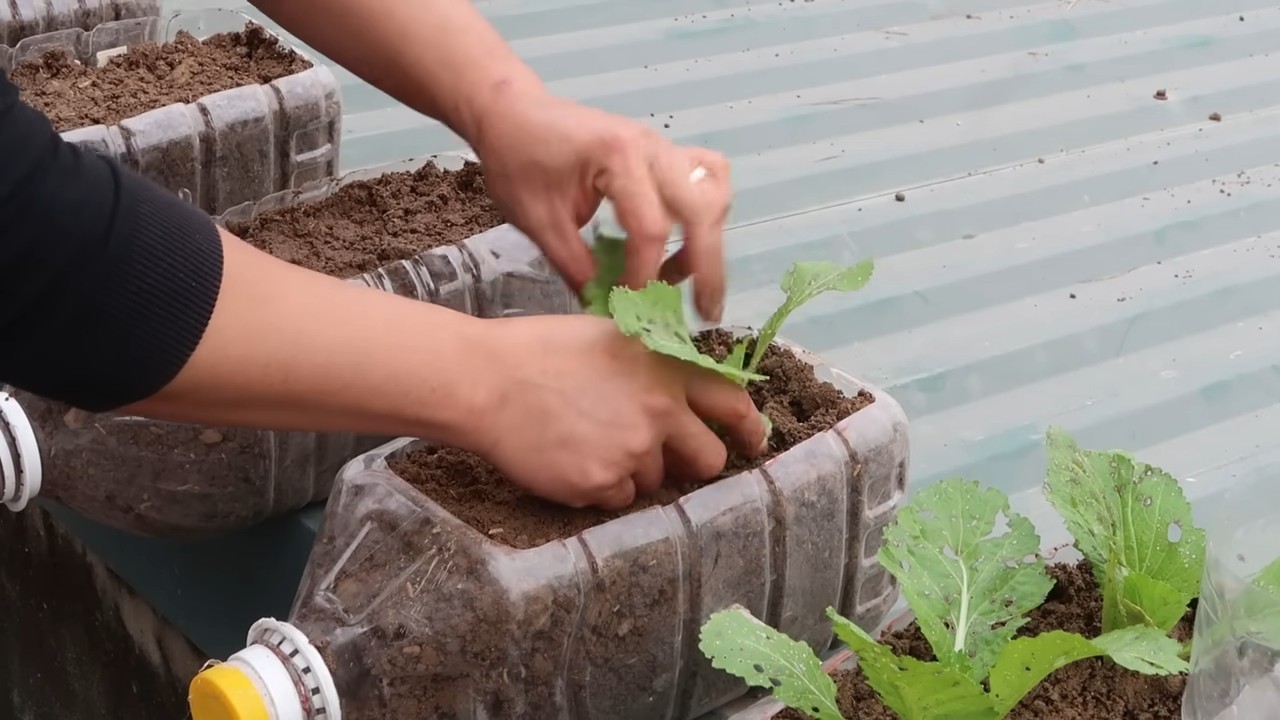
Conclusion
So, there you have it! Growing your own vegetables at home isn’t just a trendy hobby; it’s a gateway to fresher, healthier food, a more sustainable lifestyle, and a deeply rewarding connection with nature. We’ve explored a simple yet effective method to kickstart your home garden, even if you’re short on space or experience. This DIY approach, focusing on readily available materials and straightforward techniques, makes it accessible to everyone, regardless of their gardening background.
Why is this DIY trick a must-try? Because it empowers you to take control of your food source. Imagine plucking a ripe tomato, still warm from the sun, and knowing exactly where it came from and what went into its growth. Think about the satisfaction of serving a salad made entirely from your own backyard bounty. Beyond the taste and freshness, growing your own vegetables significantly reduces your carbon footprint by minimizing transportation and packaging. It’s a small step with a big impact.
But the benefits extend beyond the environmental and nutritional aspects. Gardening is a fantastic stress reliever. The simple act of nurturing plants, getting your hands dirty, and witnessing the miracle of growth can be incredibly therapeutic. It’s a chance to disconnect from the digital world and reconnect with the natural world. Plus, it’s a fantastic activity for the whole family, teaching children about where their food comes from and fostering a love for the environment.
Looking for variations? Absolutely! Once you’ve mastered the basics, the possibilities are endless. Experiment with different types of vegetables. Try growing herbs alongside your veggies to enhance their flavor and deter pests. Consider companion planting, where you strategically pair plants that benefit each other. For example, basil is known to improve the growth of tomatoes. You can also explore vertical gardening techniques to maximize space, especially if you have a small balcony or patio. Think about using recycled materials for your containers – old tires, plastic bottles, or even repurposed furniture can be transformed into unique and functional planters.
And don’t be afraid to get creative with your growing medium. While standard potting soil is a great starting point, you can also incorporate compost, worm castings, or even coffee grounds to enrich the soil and provide essential nutrients to your plants. Remember to research the specific needs of each vegetable you’re growing to ensure optimal growth and yield.
We wholeheartedly encourage you to give this DIY trick a try. Start small, be patient, and don’t be discouraged by initial setbacks. Gardening is a learning process, and every mistake is an opportunity to grow (pun intended!). The rewards are well worth the effort.
Once you’ve embarked on your home gardening journey, we’d love to hear about your experiences. Share your successes, your challenges, and any tips or tricks you’ve discovered along the way. Post photos of your thriving vegetable gardens on social media using [Your Hashtag] and inspire others to join the movement. Let’s create a community of home gardeners who are passionate about growing their own food and living a more sustainable lifestyle. So, get your hands dirty and start **growing veggies at home** today! You won’t regret it.
Frequently Asked Questions (FAQ)
What are the easiest vegetables to grow for beginners?
Great question! For beginners, we highly recommend starting with vegetables that are relatively low-maintenance and forgiving. Some excellent choices include:
* **Lettuce:** Lettuce is quick to grow and can be harvested multiple times. Simply sow the seeds directly into your container and keep the soil moist.
* **Radishes:** Radishes are another fast-growing option, often ready to harvest in just a few weeks. They prefer cool weather and well-drained soil.
* **Spinach:** Similar to lettuce, spinach is easy to grow and can be harvested as needed. It thrives in cooler temperatures.
* **Green Beans:** Green beans are relatively pest-resistant and produce a generous yield. They require support, such as a trellis or stakes.
* **Tomatoes (determinate varieties):** Determinate tomato varieties are bush-type plants that grow to a certain size and then stop, making them easier to manage in containers.
* **Zucchini:** Zucchini is a prolific producer, so be prepared for a bountiful harvest! It requires plenty of sunlight and well-drained soil.
* **Peppers (bell peppers):** Bell peppers are relatively easy to grow in containers, but they do require warm weather and plenty of sunlight.
How much sunlight do my vegetables need?
Most vegetables require at least 6-8 hours of direct sunlight per day to thrive. However, some leafy greens, like lettuce and spinach, can tolerate partial shade. Pay attention to the specific needs of each vegetable you’re growing and choose a location that provides adequate sunlight. If you don’t have a sunny spot, you can supplement with grow lights.
What kind of soil should I use?
Use a high-quality potting mix specifically formulated for containers. Avoid using garden soil, as it can become compacted in containers and doesn’t drain well. A good potting mix will provide adequate drainage and aeration for your plants’ roots. You can also amend your potting mix with compost or other organic matter to improve its fertility.
How often should I water my vegetables?
Watering frequency depends on several factors, including the type of vegetable, the size of the container, the weather, and the type of soil. As a general rule, water when the top inch of soil feels dry to the touch. Avoid overwatering, as this can lead to root rot. During hot weather, you may need to water your vegetables more frequently.
Do I need to fertilize my vegetables?
Yes, vegetables need regular fertilization to thrive. Use a balanced fertilizer specifically formulated for vegetables. Follow the instructions on the fertilizer package carefully. You can also use organic fertilizers, such as compost tea or fish emulsion.
How do I deal with pests and diseases?
Prevention is key when it comes to pests and diseases. Inspect your plants regularly for any signs of problems. Remove any diseased or infested leaves immediately. You can also use organic pest control methods, such as insecticidal soap or neem oil. Companion planting can also help deter pests.
Can I grow vegetables indoors?
Yes, you can grow some vegetables indoors, especially leafy greens and herbs. However, you’ll need to provide adequate light, either through a sunny window or with grow lights. You’ll also need to ensure proper ventilation and humidity.
What if I don’t have a garden?
No problem! You can still grow vegetables in containers on a balcony, patio, or even indoors. Choose containers that are large enough to accommodate the mature size of the vegetables you’re growing.
How do I know when my vegetables are ready to harvest?
The best way to know when your vegetables are ready to harvest is to research the specific variety you’re growing. Look for signs of ripeness, such as color, size, and texture. You can also consult a gardening guide or website for more information.
What do I do with my harvested vegetables?
Enjoy them! Freshly harvested vegetables taste best when eaten soon after picking. You can also store them in the refrigerator for a few days. If you have a surplus, you can preserve them by canning, freezing, or drying.

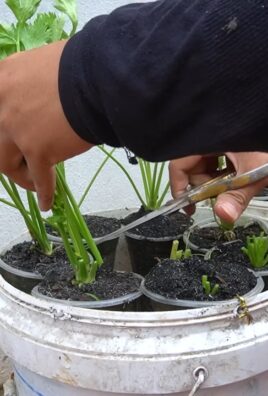
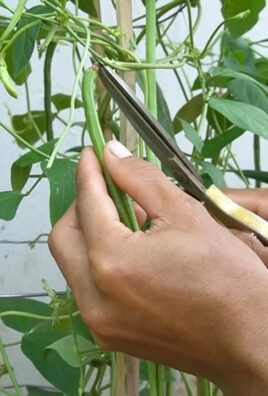
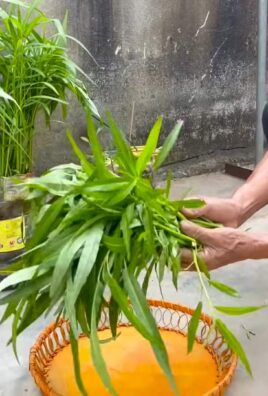
Leave a Comment